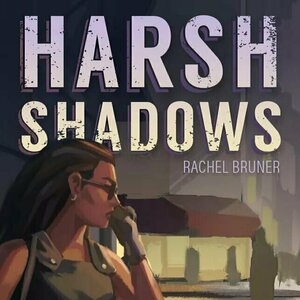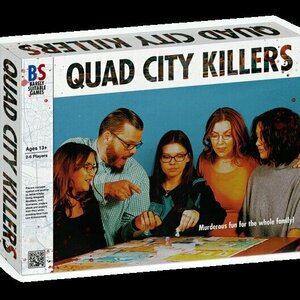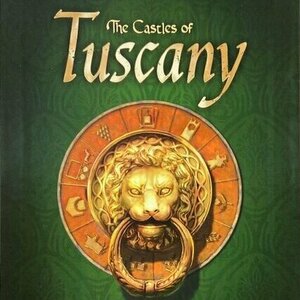
The Castles of Tuscany
Tabletop Game
The beautiful Tuscany region, in the 15th century, is the home of the Italian Renaissance. As...

My Autogrill
Food & Drink and Travel
App
Reward yourself every time you take a break in Autogrill. With MyAutogrill app you can: - earn...
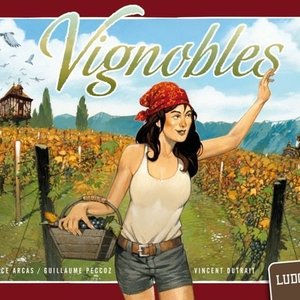
Vignobles
Tabletop Game
You have just set up as a wine merchant in the best wine-growing regions in South-West France. Your...
Boardgames 2017Games WineGames

Street Fighter: The Miniatures Game
Tabletop Game
Street Fighter: The Miniatures game is an exciting new high quality pre-painted miniatures game that...
Boardgames Miniaturegames VideoGamesintoBoardgames
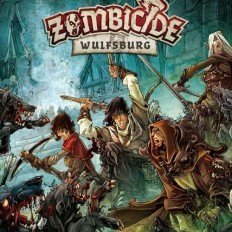
Zombicide: Wolfsburg
Tabletop Game
Wulfsburg is an expansion for the Zombicide: Black Plague board game. Explore new ways to hunt...
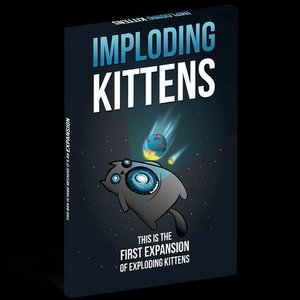
Imploding Kittens
Tabletop Game
Imploding Kittens is the first Expansion of Exploding Kittens, the award-winning card game that made...
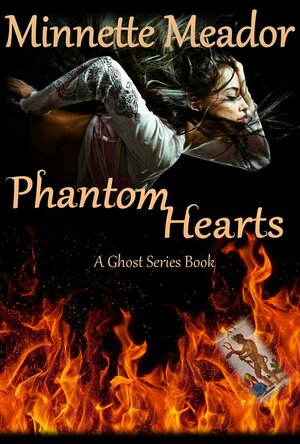
Phantom Hearts
Book
Brianna's house is filled with ghosts, the neighborhood association is trying to get her evicted,...
Paranormal Romantic Comedy
Purple Phoenix Games (2266 KP) rated Harsh Shadows in Tabletop Games
Apr 20, 2021
Disclaimer: We were provided a copy of this game for the purposes of this preview. The pictured components might not be finalized, and could differ after a successful Kickstarter campaign. -L
Harsh Shadows is a solo card game of hand management, grid movement, and deduction where you are an agent working to collect evidence necessary to apprehend an enemy spy. To setup for a game, randomly place the 9 Location cards in a 3×3 grid. Prepare the Discovery deck as described in the rules, place 1 face-down Discovery card to the right of each Location, and place the rest of the deck off to the side of the grid. Shuffle the Confiscated Item cards and deal the appropriate number to each of the Case File cards – 3 to Evidence, 1 to Red Herring, and 4 to False Leads. The Spy card is placed on the upper-left-most Location, and your Agent card on the lower-right-most Location. Shuffle the Spy Movement cards, and the game is ready to begin! It should look similar to the picture below.
The game is played over a series of rounds in which you will be moving your Agent, performing additional actions, and then moving the Spy. The goal is to track down the Spy, with the correct evidence in hand, before the Spy is able to flee the scene. The first thing that you will do each round is to move your Agent. You may only move to a Location that is adjacent or diagonal to your current Location. Once you move to a new Location, you will draw the top Discovery card from that Location. Discovery cards will either be Items, Clues, or Bombs. Items are collected as potential Evidence, Clues are used to reveal Confiscated Items from Case Files, and Bombs force you to discard a card from your tableau. After you have moved and collected a new Discovery card, you may perform any/all of these additional actions: Use Clue Cards, Place the Tracking Bug, Track the Spy, or Use your current Location’s ability. To Use Clue cards, you will discard a number of clues in order to reveal a Confiscated Item card from a Case File. The Confiscated Items under the Evidence Case File show the 3 items you are required to have in hand to apprehend the Spy by the end of the game. The item under the Red Herring, if you have it in hand at game’s end, will cause you to automatically lose. The 4 items under the False Leads will neither help you win, nor cause you to lose – they simply offer fodder for you to discard when necessary.
Another element required to win the game is to place the Tracking Bug on the Spy. On your turn, you may place the Tracking Bug at your current Location card – if the Spy moves to the Location on a future turn, they are considered to be ‘bugged’ and the Tracking Bug is live! Twice per game, you are allowed to Track the Spy. To do so, you will look at the top card of the Spy Movement deck, and return it to the top. This just lets you see to which Location the Spy is about to move. And finally, you can use your Location’s ability. Once you have taken as many of the additional actions as you want, it is time to move the Spy. Reveal the top card of the Spy Movement deck, and move the Spy in the appropriate direction to a new Location. At the Spy’s new Location, add a Discovery card to its pile. Play continues in this manner until either you make an accusation, or the Spy escapes. In order to make an accusation, you must have Evidence cards in hand, the Spy must be bugged, and you must be at the same Location as the Spy. When you make an accusation, you will reveal any remaining cards under the Evidence and Red Herring Case Files. If you have the 3 matching Evidence cards, you win and apprehend the Spy! BUT if you have the Red Herring card, or you are missing any of the required Evidence cards, you lose. If you haven’t made an accusation in time, the Spy could escape, causing you to lose the game as well – I’ll leave those details for you to discover on your own!
In theory, Harsh Shadows seems like a neat and strategic card game, but how does it hold up in reality? Pretty well, actually! The first thing I want to talk about is how strategic it is, even with its elements of deduction. You need to collect Evidence fast in order to catch the Spy, so what’s the best plan of movement? Also, each Location has a special ability, so is there an ability you need to use now or do you want to wait a bit longer? After using a Location’s ability, it is no longer available for the rest of the game, so you have to time those uses carefully. Along those lines comes the deduction. Sure, you can try to reveal all the Confiscated Items so that you’re 100% sure that you’ve got the right Evidence. But if you don’t work fast enough, the Spy could escape. Are you willing to risk only knowing for sure what 1 piece of Evidence in order to confront the Spy before it’s too late? Or do you want to save up Clues to purchase that coveted Red Herring, to know for sure what not to keep in order to win. There’s a balance of risk with deduction, as well as a real-time element in the sense that the game has a finite amount of rounds. You’re not racing a physical clock, but once the Discovery deck runs out, the Spy is considered to be on the run, on the verge of escaping. Overall, this is a casual card game, but it has a decent amount of strategy to keep you engaged and entertained.
Let’s touch on components for a second. Obviously, this is just a card game, and this is a preview copy. As I said earlier, the final production could differ from this version, but I have to say that this preview copy is good quality. The cards are nice and thick, the artwork thematic and clean. I imagine the rules would get some final edits for slight clarifications, but for the most part the production quality is already pretty decent.
I have to say that Harsh Shadows surprised me. I’d never played a solo game with deduction elements, and it was actually quite exciting. Usually the deduction games I’ve played are based around sussing out a traitor amongst a group of people, so there is that human interaction element that can really help guide your thoughts and decisions. In Harsh Shadows, there’s nobody but yourself – you can’t look for tells in other players because the cards won’t speak to you. It feels riskier in this way because it’s more a game of odds then, instead of your ability to pick out social cues. Other people may feel differently, but I thought this was a neat twist on the deduction mechanic. If you’re looking for a strategic solo game, that plays relatively quickly and casually, I would definitely recommend checking out Harsh Shadows. It goes live on Kickstarter here in April, and I look forward to following its progress!
Purple Phoenix Games (2266 KP) rated Quad City Killers in Tabletop Games
Jan 30, 2021
Quad City Killers (or QCK) is a competitive game of moving around a map and eliminating points of interest by using resources from hand. Or, in actual gamespeak, stalking the streets of the QC murdering prey by using weapons, modifiers, and scenario cards to adjust the winds of chance for success.
DISCLAIMER: We were provided a prototype copy of this game for the purposes of this review. These are preview copy components, and I do not know for sure if the final components will be any different from these shown. Also, it is not my intention to detail every rule in the game, as there are just too many. You are invited to download the rulebook, back the game through the Kickstarter campaign ending March 5, 2021, or through any retailers stocking it after fulfillment. -T
To setup place the large map (an actual map that you would find in your grandparents’ Oldsmobile) on the table. Shuffle the Prey deck and the Resources deck separately and place them in their spots on the map. Place the Heat tokens on the lowest space in each city. Keep the three dice nearby for all players’ use. Each player will choose a serial killer profile mat, a color of skull mover token, and Dexterity token to track progress. Each player will also draw five Resource cards from the deck and one Prey card to place on the board in a city along with their skull mover token. The game may now begin!
The first thing each player will do on their turn is perform a Hunt action by drawing and placing on the map the top card of the Prey deck. Most Prey are color-coded to be placed in a matching city, but some are not and may be placed in any city on the map. Next, the player may perform any three actions from the following: Hunt, Travel, Attack, Scenario, Discard.
Hunt works the same as the action performed at the beginning of each turn: draw a Prey card and place it on the board. In order to Travel to a new city the player will roll the dice. For a value of 1+ the player may travel to any city within their current state. For a value of 2+ the player may cross the Old Man to the other side (preferably using the half-finished under-construction new I-74 bridge). A player may play a Scenario card from their hand, and if it shows the Action icon they will spend one of their three actions to play and resolve it. A player may also choose to Discard two cards from their hand and replace them with cards drawn from the Resource deck for an action.
The game would not be named Quad City Killers if killing was not involved somehow. As the final option of action to be taken on a turn a player may choose to Attack a Prey card in the same city in which the player’s token resides. To Attack, the player will consult the Prey card’s printed defense value for their target number. The player will then combine any Resource cards they may have in hand with their current Dexterity score (tracked on their player mat) and the roll of the three dice. If the end result matches or exceeds the Prey’s defense value the Prey is eliminated. The player collects the Prey card for a trophy and for its Notoriety value (victory points) at game end.
Resource cards come in different flavors: Weapons, Scenarios, Modifiers, and Ego. Weapon cards are just that: weapons. They may be used once for an attempted kill and then are discarded. Scenarios may mess with opponent tactics, allow players to move Prey cards to different cities, or other various activities. Modifiers may also adjust the current Advantage enjoyed by the player or be played on a Prey card to lower its defense value. Ego cards (and also some Weapon cards) will have an M.O. icon on them and may be placed directly on the player mat. These M.O. cards offer a once-per-turn advantage for the player and are very powerful.
The game continues in this fashion of taking turns moving around the map, hunting prey and killing them, and using Resources to adjust the difficulty of the murder. Once a player has increased their Dexterity token to the end of the track the game ends and the players count up Notoriety values (VP) of all slain Prey cards to arrive at the greatest serial killer the Quad Cities has ever seen (which, being from the QC would be saying something – I don’t remember ANY serial killers here).
Components. Okay, this was a super cool game to open up in the mail. Inside the mailer box was this strange Evidence bag. I have never seen an Evidence bag in my life so I wasn’t quite sure what was inside. But when I opened it and saw it was the components for the game I immediately smiled at how cool that was to include. It certainly made an impression. Now, please remember that this is a prototype copy of the game, and the finished version will have slightly different and improved components. That said, what we were provided is very close to final quality (and better than some games I have in my collection!). The cards are all fine, the dice are dice, and the tokens are well-designed and interesting. The best component, for me, is the excellent map of the QCA. It folds/unfolds like an old map would (prior to GPS) and has my hometown right on it! Luckily I live in a suburb(?) of the Metropolitan QCA so my house is nowhere to be found on the map, but it is very strange and exciting to play a game on a map of your home.
The game as a whole is pretty good. Though the estimated time to finish the game is quoted at 90-180 minutes (and maybe with the full compliment of players), my plays with my wife were well under an hour each time. We both enjoyed the game quite a bit once we got over the whole premise of it. The theme is obviously dark and macabre, but in the end it is still just a game.
I felt very engaged for every second of the game as I watched my wife nail roll after roll during her Attack actions while I fail to manage even a roll of 2+. Yes, I am unable to roll 2+ on THREE DICE. My issues aside, the dice really do add a layer of chance (obv) that all the accounting and cardplay just will not cover. I like that. I like chance in my games, even when it goes against me. I also enjoyed having five actions from which to choose three on my turn, but I could also use the same action all three times if I wished. More options is usually good, and having more than one obvious route or strategy is a huge bonus for me.
All in all I really did enjoy this game quite a bit. Again, the theme may be off-putting for some, and I will not play this game with my children until they are probably older than the suggested 13+ but I can definitely see myself breaking this out with a group of adults who are itching for something completely different from what they are accustomed to playing. If you are like me and need something just absolutely jarring in your collection, I urge you to take a look at Quad City Killers, on Kickstarter now until March 5, 2021. Just stay out of Milan (pronounced MY-lin) and we will be fine.

